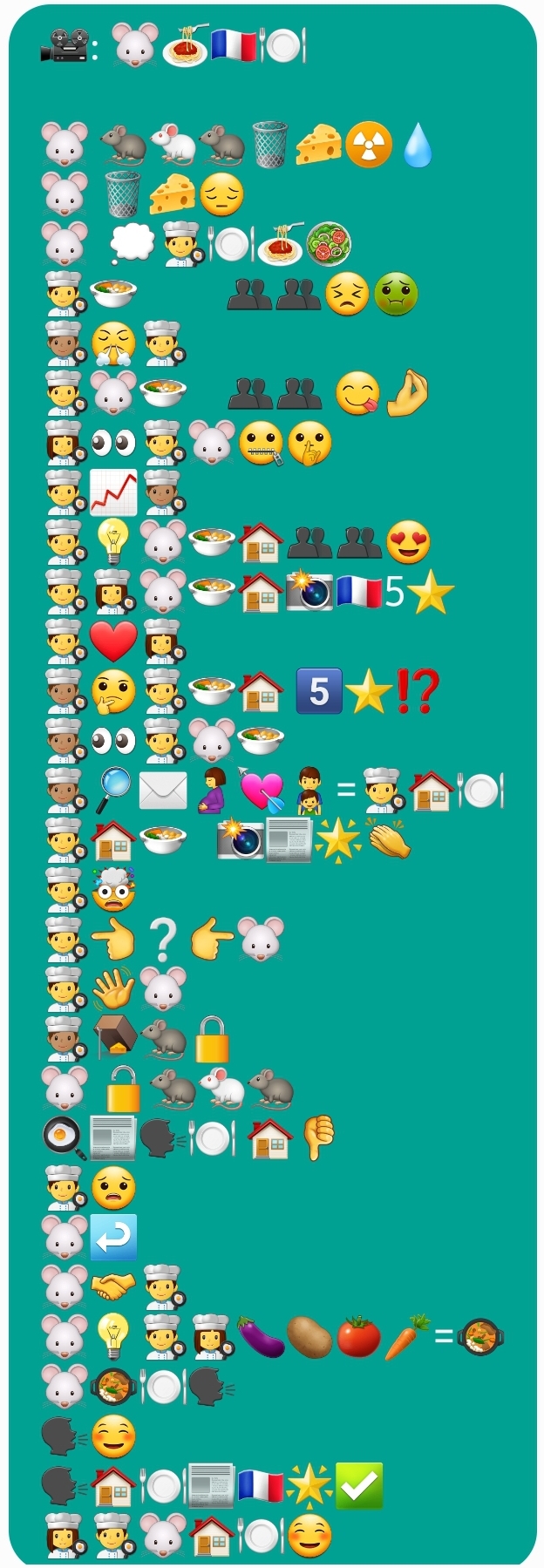
Did you rely more on syllables, words, ideas or a combination of all of them?
I relied on words and ideas rather than on syllables. My strategy was to use a combination of these to best summarize the plot by using emojis to either represent characters, objects, and places, or to highlight ideas that signified key moments in the plot.
Did you start with the title? Why? Why not?
I started with the title of the movie. I specified the title first so as to provide context to the plot and help others figure out the genre of story they will attempt to decipher.
Did you choose the work based on how easy would it be to visualize?
To use emojis to decode a title was simple, but conveying a story through just these visual elements was challenging. So I chose to use a movie that I hoped would be familiar to others based on its popularity. I also presumed it would be easier to find emojis for as well as interpret since it was an animated movie (hint!).
Reflection
I began this task on a Word document, copying emojis from an online keyboard but later switched to the notes on my phone, where I found the use of emojis convenient and intuitive.
I thought this task would be less demanding than informal writing, but I found it to be more difficult since I was not able to convey my thoughts or interpretations but rather had to rely on emojis to convey universal symbolism that would effortlessly be understood by everyone. Bolter (2001) describes how diagrams, illustrations, and maps have played an important role in the communicative power of printed books (p. 48). In the same way, I appreciate how emojis have the communicative power to express emotion and tell a story. Still, this task illustrated how emojis are still quite limited in what they can convey.
Even an animated, appropriate for all ages movie conveys emotions and ideas that are nuanced and not captured by emojis since emoji-to-text is often not a straightforward translation. There are limited characters and symbols, so we have to depend on the visuals that are ‘categorically close’ to offer the translation, and there is a lot of ‘piecing together of concepts’ to deduce a sentence. In doing so, the original message maybe missed or lost altogether. Interestingly Kress (2005) views words as “vague” and depictions and images as “specific” (p. 15). Yet, emojis are can be both, as Bolter also identifies a tension between textual and visual modes of representation (2001, p.55).
References
Kress (2005), Gains and losses: New forms of texts, knowledge, and learning. Computers and Composition, Vol. 2(1), 5-22.
Bolter, J. D. (2001). Chapter 4. Writing space: Computers, hypertext, and the remediation of print (2nd ed.). Mahwah, N.J: Lawrence Erlbaum Associates. doi:10.4324/9781410600110
Nick Hall
October 18, 2021 — 12:10 pm
It has to be Ratatouille!!
Rifa
October 18, 2021 — 2:46 pm
Oui!